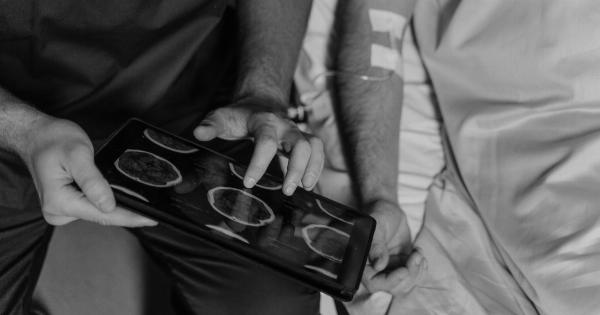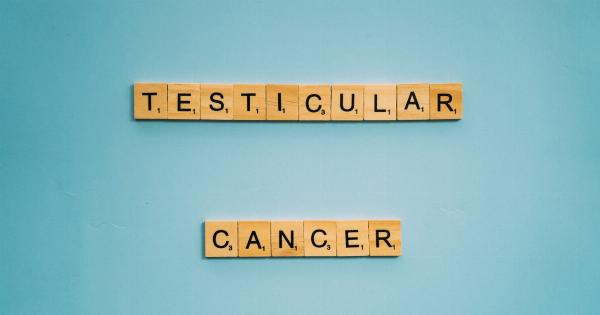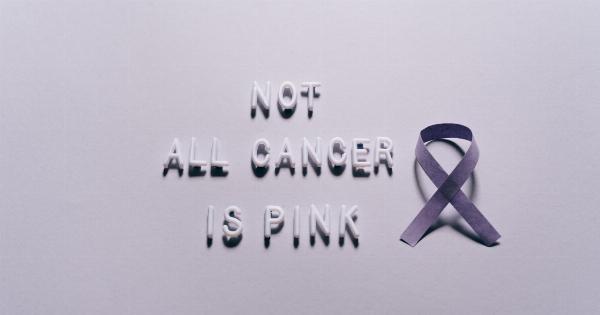Testicular cancer is a potentially life-threatening condition that affects a significant number of men worldwide. It is crucial for every man to be aware of the key symptoms associated with this type of cancer.
Early detection and prompt medical intervention can make a significant difference in treating testicular cancer successfully. In this comprehensive guide, we will discuss the two key symptoms that every man should watch out for, along with essential information on risk factors, diagnosis, treatment options, and prevention strategies.
1. Lump or Swelling in the Testicles
The most common symptom of testicular cancer is the presence of a lump or swelling in one or both testicles. While not all lumps indicate cancerous growth, any abnormal enlargement or swelling should be thoroughly examined by a healthcare professional.
It is essential to note that testicular lumps can also be caused by conditions unrelated to cancer, such as testicular torsion or epididymitis. However, it is crucial not to ignore any changes in the testicles and seek medical advice for a proper diagnosis.
2. Testicular pain or discomfort
Persistent pain or discomfort in the testicles is another potential symptom of testicular cancer. Men experiencing such symptoms should not hesitate to consult their healthcare provider.
It is important to remember that testicular pain can also be caused by non-cancerous conditions like infection or injury. Nonetheless, medical evaluation is essential to rule out or diagnose testicular cancer accurately.
Risk Factors for Testicular Cancer
While testicular cancer can affect males of any age group, certain factors may increase the risk of developing this condition. These risk factors include:.
- Undescended testicles (cryptorchidism) – When one or both testicles fail to descend into the scrotum, the individual is at a higher risk of developing testicular cancer.
- Family history – A family history of testicular cancer puts individuals at a greater risk. Having a brother or father with the disease increases the chances of developing it.
- Abnormal testicular development – Conditions like Klinefelter syndrome, where male infants are born with the presence of an extra X chromosome, increase the risk of testicular cancer.
- Age – Testicular cancer is more likely to occur in men between the ages of 15 and 44.
Diagnosis of Testicular Cancer
To confirm or rule out the presence of testicular cancer, healthcare professionals use various diagnostic procedures:.
- Physical examination: The healthcare provider will carefully examine the testicles for lumps, swelling, or any signs of abnormalities.
- Ultrasound: An ultrasound scan is performed to visualize the testicles in detail, helping to determine the nature of any abnormalities and guide further investigations.
- Blood tests: Blood markers like alpha-fetoprotein (AFP), human chorionic gonadotropin (HCG), and lactate dehydrogenase (LDH) levels are checked to assess if cancer is present.
- Biopsy: In specific cases, a biopsy may be necessary to obtain a tissue sample for analysis. However, due to the risk of spreading cancer cells, biopsies are not performed in suspected testicular cancer cases unless other diagnostic tests are inconclusive.
Treatment Options for Testicular Cancer
The appropriate treatment for testicular cancer depends on several factors, including the type and stage of cancer. Common treatment options for testicular cancer are:.
- Surgery: Surgical intervention involves the removal of the affected testicle (radical inguinal orchiectomy). In some cases, a retroperitoneal lymph node dissection (RPLND) may be required to remove lymph nodes in the abdomen.
- Chemotherapy: Chemotherapy involves the use of powerful drugs to kill cancer cells and prevent their growth or spread. It may be administered before or after surgery, depending on the cancer stage.
- Radiation therapy: This treatment option uses high-energy rays to destroy cancer cells. It is typically recommended after surgery if there is a risk of cancer recurrence.
It is essential to note that treatment plans are personalized, and healthcare providers consider individual cases to determine the most suitable approach.
Prevention and Self-Examination
While testicular cancer may not always be preventable, certain measures can help in early detection and timely intervention:.
- Self-examination: Regular self-examination of the testicles can help identify any lumps or abnormalities. It is recommended to perform the examination after a warm shower, gently rolling each testicle between the fingers and thumb.
- Medical check-ups: Regular medical check-ups and consultations with healthcare providers contribute to early detection and prompt treatment of any potential health concerns, including testicular cancer.
- Protective measures: Wearing protective gear during activities that pose a risk of testicular injury, such as contact sports, can help prevent trauma that may lead to testicular cancer.
Conclusion
Recognizing the key symptoms of testicular cancer is vital for every man’s well-being. Any unusual lumps, swelling, pain, or discomfort in the testicles should never be ignored.
Seeking professional medical advice and early diagnosis significantly improve the chances of successful treatment. Regular self-examinations and proactive discussions with healthcare providers ensure early detection and timely interventions, if necessary.
With awareness, vigilance, and appropriate medical care, men can protect themselves against testicular cancer and promote their overall health and longevity.

























